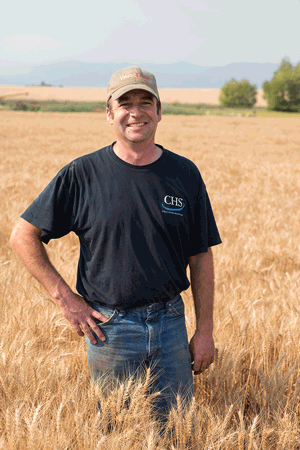No-Till Farmer has launched a new blog, “My No-Till Journey,” aimed at helping farmers new to no-till practices increase their chances of success.
 This blog was created to let beginning no-tillers share, in depth, the challenges they’re tackling as they adopt the practice. Readers can leave questions, comments and feedback after each post, or offer tips about specific challenges they’ve faced.
This blog was created to let beginning no-tillers share, in depth, the challenges they’re tackling as they adopt the practice. Readers can leave questions, comments and feedback after each post, or offer tips about specific challenges they’ve faced.
The first subject of this blog is Doug Manning, who describes his decision last year to implement no-till on his farm near Kalispell, Mont., where he raises wheat, barley, peas and canola.
Manning says his business education ingrained in him a desire to increase efficiency and profitability, and he felt a single-pass no-till system would meet his goals of improving soil health and farming more effectively.
“The changes we’ve implemented in order to achieve those goals include the purchase and use of a no-till Cross Slot drill and the planting of cover crops,” Manning says in his first post. “We have reduced fall work and eliminated the plow. We are monitoring field nutrient needs and responding appropriately, and will continue to study and research new practices that benefit the soil and the business.”
Manning adds that debate continues within the family and throughout the community about the efficacy of the implemented changes. No-till isn’t a widespread practice in his area.

“Generational differences regarding the appearance of crops, the management of residue, taking the “sport” out of farming by reducing the number of hours in the seat of a tractor and doubt about whether anything new can work — as well as the old — have led to many conversations,” he says. “Some conversations have been productive and thoughtful.
“Some neighbors are intrigued by the potential of the new practices. Landlords with the intention of leaving a legacy of healthier farms behind are quite supportive.”
Throughout the next year, Manning will be sharing the successes and challenges he’s facing in the field as he implements and improves his no-till system.







Post a comment
Report Abusive Comment